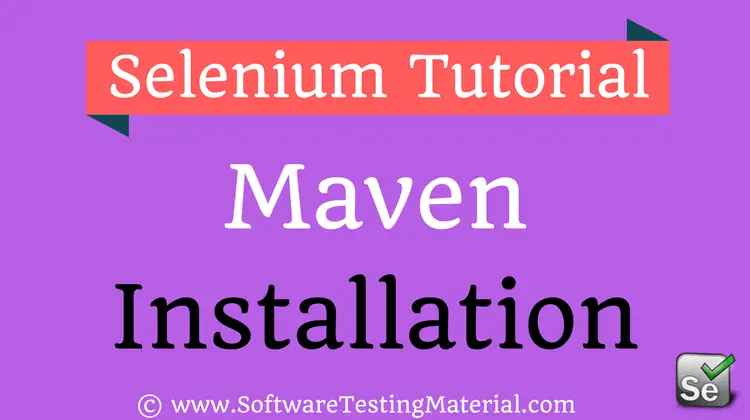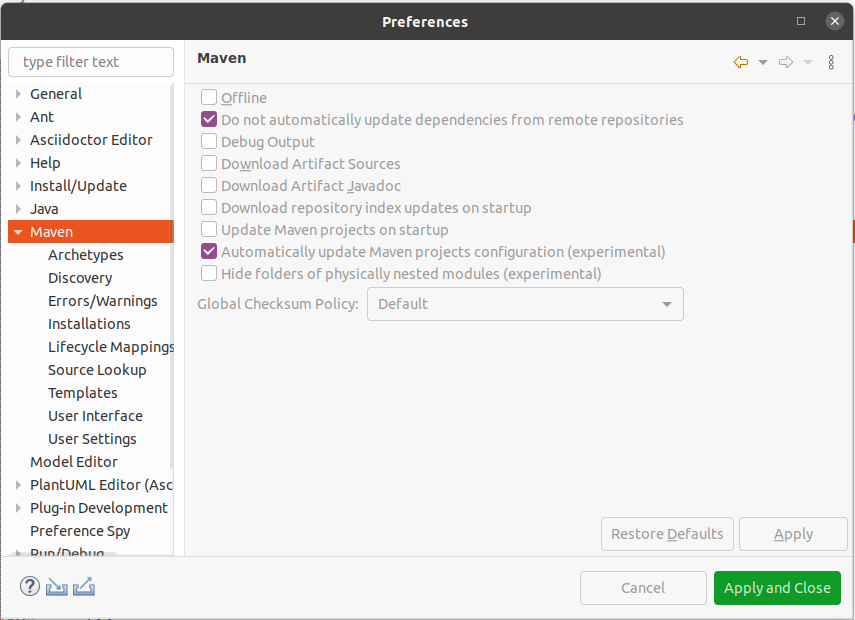

- #HOW TO INSTALL MAVEN ON ECLIPSE HOW TO#
- #HOW TO INSTALL MAVEN ON ECLIPSE CODE#
- #HOW TO INSTALL MAVEN ON ECLIPSE FREE#
Once this has been filled in you can click Finish.
#HOW TO INSTALL MAVEN ON ECLIPSE CODE#
The reason we want this, by the way, is that having either the sources or the Javadoc available really helps when you use code autocompletion in Eclipse – Eclipse will automatically read the Javadoc and provide the documentation in a little tooltip. The options “Download Artifact Sources” and “Download Artifact JavaDoc” are unchecked by default. You will see the Maven configuration settings. This step is not required, but it will make things a little easier in the rest of this tutorial.įrom the menu, select Eclipse -> Preferences. Once Eclipse is started (and any welcome messages have been closed), you will be presented with a screen that should look roughly like this:īefore we start creating our actual project in Eclipse, there are a few preferences that we should tweak.
#HOW TO INSTALL MAVEN ON ECLIPSE FREE#
Feel free to pick/create a directory of your choice, or just accept the default. When starting Eclipse for the first time, you will be asked for a workspace directory – this will be where Eclipse stores all project data as well as some configuration information. You are of course free to also install the Maven command line tools, but we won’t be using those directly in this tutorial. We will use this plugin to work with Maven. Select either the “Eclipse for Java developers” or “Eclipse for Java EE developers” installation option.Įclipse IDE comes with a Maven plugin (called m2e) already installed.

In this tutorial, we will use Eclipse for Java Developers version 4.18.0 (2020-12), but it shouldn’t matter too much which exact version you have installed. If anything is already sufficiently familiar to you, you are of course free to skip ahead! Setting up your environmentīefore we kick off, you will need to install the Eclipse IDE.
#HOW TO INSTALL MAVEN ON ECLIPSE HOW TO#
However, we do not assume that you know how to use either RDF4J, Maven, or Eclipse, so we’ll go through it all one step at a time. In this tutorial, we assume that you have a basic understanding of programming in Java, and have at least an inkling of what RDF is. But you can work with RDF4J just as well in a different build tool or IDE. Maven is good because it allows you to just define which libraries you want to use and never worry about any further third-party libraries you might need, and Eclipse IDE is good because it has good integration with Maven, code completion features, and is just generally a great Java development environment. These are simply very useful tools for quickly getting a Java project started. You don't have to use Apache Maven or Eclipse IDE if you want to work with RDF4J.


 0 kommentar(er)
0 kommentar(er)
